東長寺檀信徒会館・文由閣のランドスケープデザイン
Tochoji-Zen-Temple Danshinto Kaikan, Bunyukaku Landscape design
Date: 2015.06
Type: Garden Design
Location: Shinjuku-ku, Tokyo, Japan
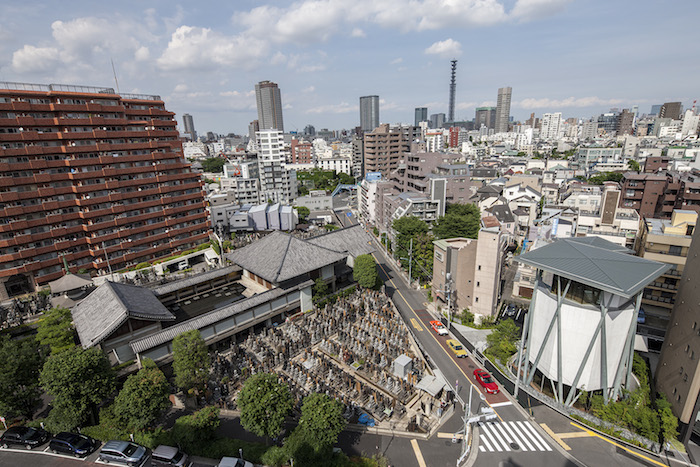
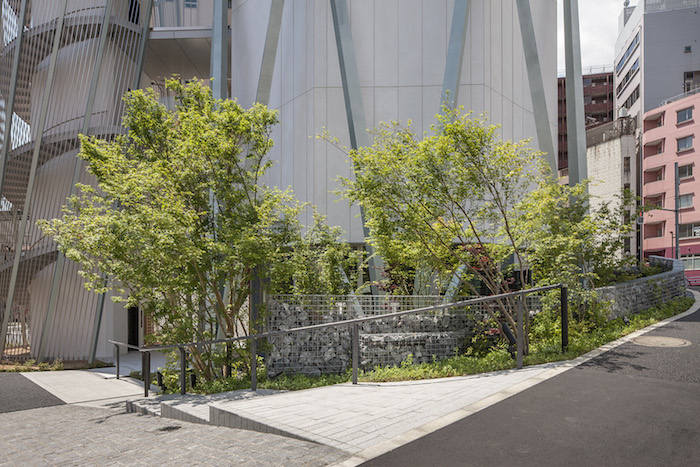
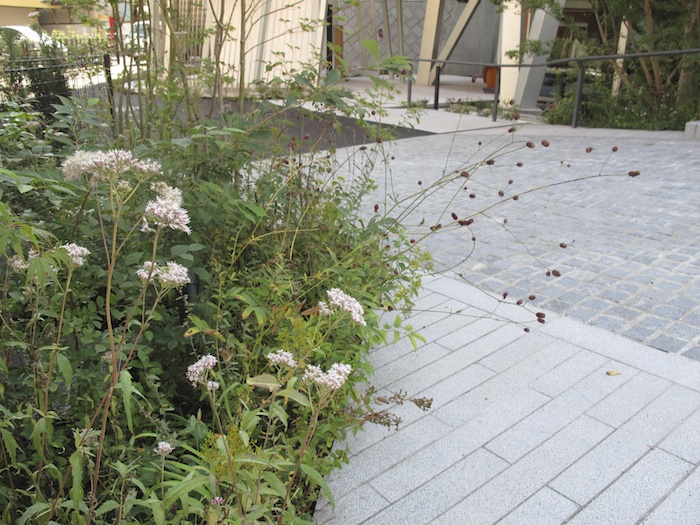
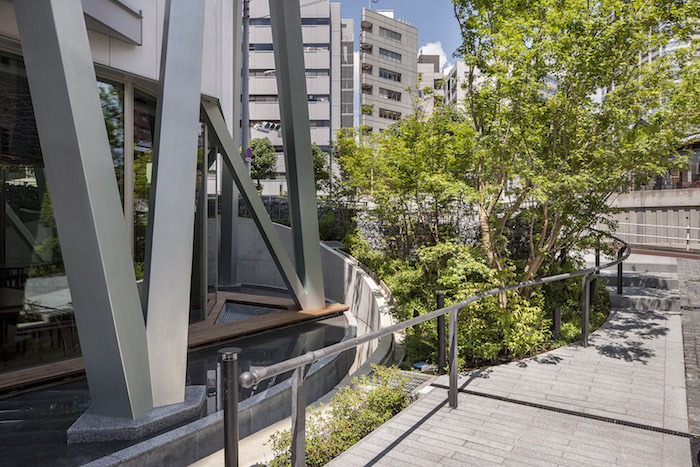
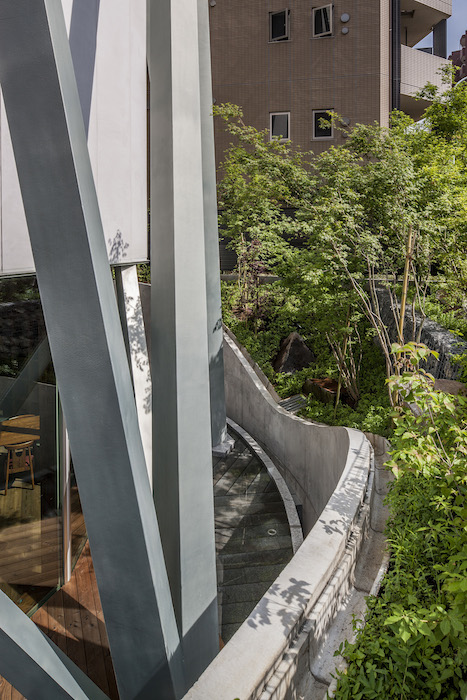
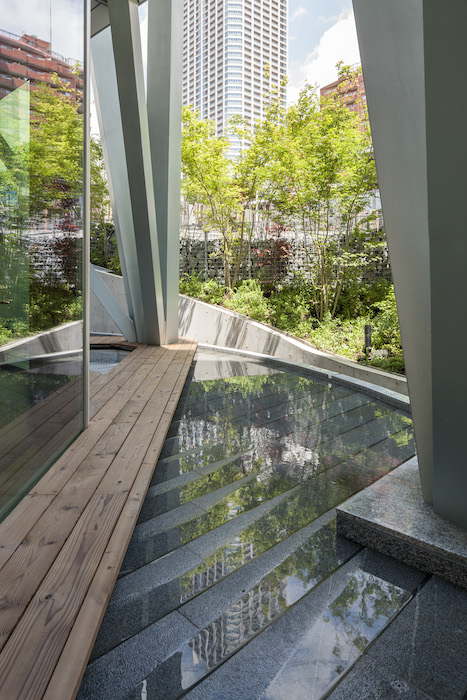
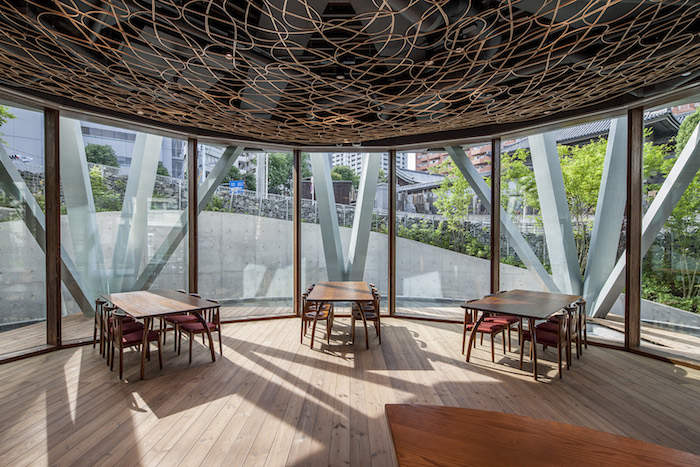
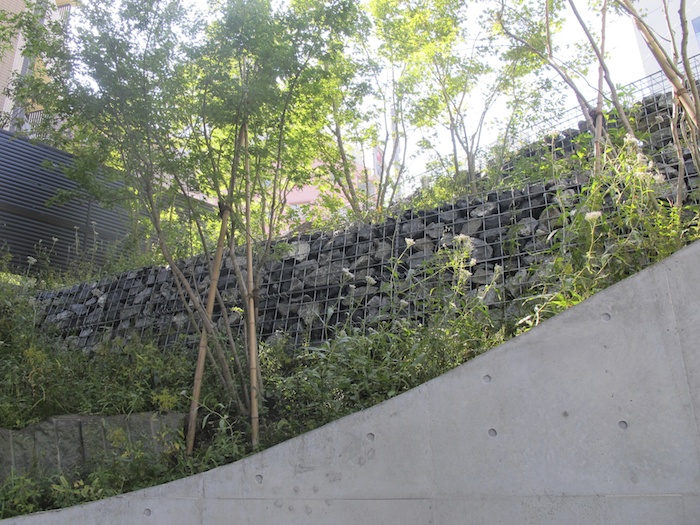

文由閣の作庭は敷地と周辺地域に関わる地歴を地図資料などから調査することから始まった。その結果、敷地は蓮池や水田の畦や土手があったことが分かり、もともとそこに在りながらも近代の都市化によって失われた自然環境を現代的な技術で再生するというコンセプトを考えた。
具体的には、在来の草本植物を特殊な技術で寄せ植えした植生マットである(有)仲田種苗園の「野の花マット」を導入した。スミレ、ホタルブクロ、カワラナデシコ、キキョウ、オミナエシ、ミソハギ、ワレモコウなどの万葉集などでも歌われた武蔵野の野草が15種類ほど構成される。春夏にかけてはアゼターフの草花、秋にはモミジの紅葉、冬には冬枯した植物の変化の様子を楽しむことができる。
また、20数本のモミジ(イロハモミジ、コハウチワカエデ、ノムラモミジ)を谷沿いに植栽した。紅葉川(もみじがわ)という川の名前に因んだこともあるが、決定的な理由としては敷地の日照条件も考慮してのことである。敷地南側には高層のビルが建ち並んでいる。モミジは山林の中でも大きな常緑樹の下や水の集まる谷筋でよく育つ。現在の敷地は都市環境とはいえ、山林の谷筋にとても良く似ている。
建築周辺の水盤には地下水をくみ上げている。水位の変化は、地下水位の変化と連動する。水盤の底は江戸古来の文様である臼の目型を参照し、表面を洗濯板のように凹凸をつけることで、水位の変化に応じて見え方の変化がある。
Garden design of Bunyukaku has started from looking through the history of the site. We could understand that there used to be lotus pond and paddy field here. The findings get us to make a concept that revitalizing the potential natural environment lose by modern urbanization with recent technology.
One of the ideas is to use “vegetation mat” by Nakada Seed and Nursery in Fukushima, which composed by about 15 species of native grasses (Heartsease, Campanula punctate, fringed pink, balloon flower, Valerianaceae, Japanese loosestrife, burnet ets.) Those grasses appeared in The Anthology of Myriad [Ten Thousand Leaves] in 750.
Other idea is to create Maple valley composed by three types of maple trees. The site is located on valley topography and surrounded by high-rise building. In this condition, maple trees could grow well compared with other broad leaf deciduous trees. In natural environment, maples grow along stream in the forest with high moisture, no enough sunlight. Even in such as urban condition, the characteristics of the condition is very similar to the natural environment.
Water in the water feature surrounding the new hall is come from underground, so that water level has tidal change along with underground water level. Paving pattern on the bottom of water feature is referred by old Japanese pattern “Usumenogata” to make convexo-concave surface so that people could enjoy the transitional change of water level here.
